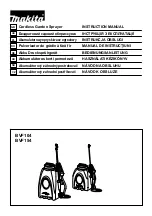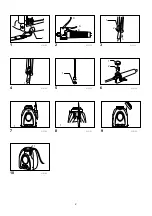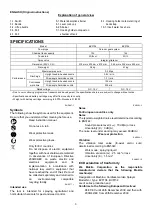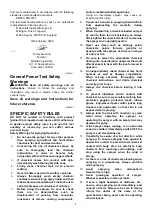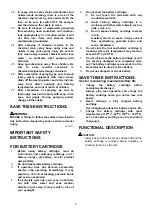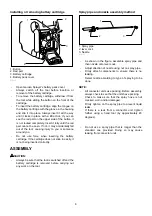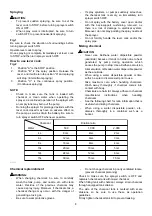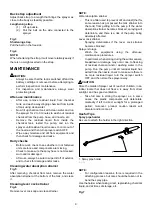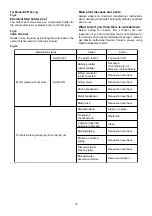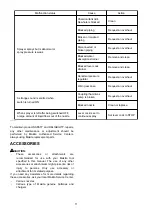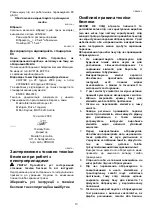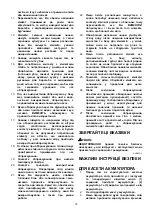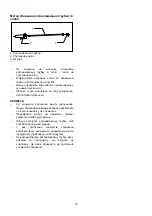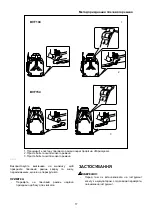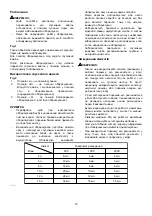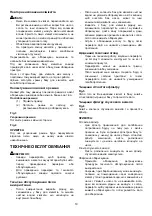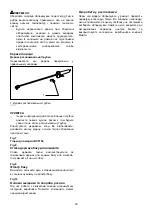
5
22.
In cases where spray status deteriorates and
nozzle needs cleaning, there is a risk of the
chemical liquid coming into contact with the
face, so be sure to switch OFF the sprayer,
and then remove the nozzle to clean.
23.
Be sure to dispose of wastewater generated
from washing used containers and chemical
tank appropriately in a location where it will
not flow into rivers and streams and/or
contaminate groundwater.
24.
After spraying, if chemical remains in the
chemical tank, spray hose, spray pipe and
nozzle, it may cause spray injury. Be sure to
fully wash away residual chemical with clean
water - in particular, after spraying with
herbicide.
25.
Keep agrochemicals away from children. Be
sure to store residual chemicals in
chemical-designated storage containers.
26.
After completion of spraying, be sure to wash
(spray wash) equipment with clean water,
drain off the washing water, and store indoors
away from direct sunlight and freezing
temperatures, and out of reach of children.
27.
After completion of spraying, be sure to
thoroughly wash entire body with soap, rinse
eyes, and gargle. During spraying period,
change clothes daily.
SAVE THESE INSTRUCTIONS.
WARNING:
MISUSE or failure to follow the safety rules stated in
this instruction manual may cause serious personal
injury.
ENC007-4
IMPORTANT SAFETY
INSTRUCTIONS
FOR BATTERY CARTRIDGE
1.
Before using battery cartridge, read all
instructions and cautionary markings on (1)
battery charger, (2) battery, and (3) product
using battery.
2.
Do not disassemble battery cartridge.
3.
If operating time has become excessively
shorter, stop operating immediately. It may
result in a risk of overheating, possible burns
and even an explosion.
4.
If electrolyte gets into your eyes, rinse them
out with clear water and seek medical
attention right away. It may result in loss of
your eyesight.
5.
Do not short the battery cartridge:
(1)
Do not touch the terminals with any
conductive material.
(2)
Avoid storing battery cartridge in a
container with other metal objects such as
nails, coins, etc.
(3)
Do not expose battery cartridge to water
or rain.
A battery short can cause a large current
flow, overheating, possible burns and
even a breakdown.
6.
Do not store the tool and battery cartridge in
locations where the temperature may reach or
exceed 50
゚
C (122
゚
F).
7.
Do not incinerate the battery cartridge even if
it is severely damaged or is completely worn
out. The battery cartridge can explode in a fire.
8.
Be careful not to drop or strike battery.
9.
Do not use dropped or struck battery.
SAVE THESE INSTRUCTIONS.
Tips for maintaining maximum battery life
1.
Charge the battery cartridge before
completely discharged.
Always stop tool operation and charge the
battery cartridge when you notice less tool
power.
2.
Never recharge a fully charged battery
cartridge.
Overcharging shortens the battery service life.
3.
Charge the battery cartridge with room
temperature at 10
゚
C - 40
゚
C (50
゚
F - 104
゚
F).
Let a hot battery cartridge cool down before
charging it.
FUNCTIONAL DESCRIPTION
CAUTION:
•
Always be sure that the tool is switched off and the
battery cartridge is removed before adjusting or
checking function on the tool.

